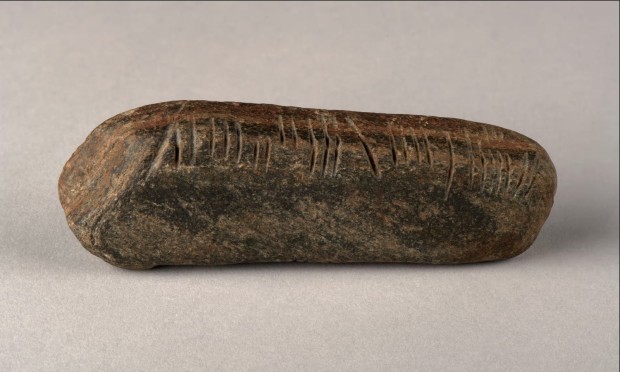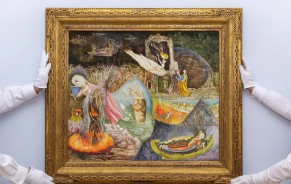
(Photo: HERBERT ART GALLERY AND MUSEUM)
In the tranquil English city of Coventry, amidst the tranquility of gardening, an extraordinary find has rewritten a slice of history. A dedicated geography teacher, Graham Senior stumbled upon a 1,600-year-old treasure buried beneath the earth's surface- an ancient sandstone adorned with intricate early Irish inscriptions.
Revelations of Ancient Inscriptions
The inscriptions on the weathered sandstone reveal a tale of early linguistic heritage. Crafted in ogham- an ancient alphabet used for writing in the Irish language during the early Medieval period, the stone offers a captivating glimpse into a bygone era. Ogham, characterized by its unique arrangement of parallel lines, served as a precursor to the elaborately adorned vellum manuscripts and Latin insular script.
Peering into the Past
The serendipitous discovery, made as Senior tended to his verdant garden, marks a momentous archaeological find. A lept object measuring only four inches and less than 0.6 pounds in weight, the rock boasts words written on three of its sides. It is strongly believed that the poem is probably a person's name along with the genealogy and lifestyle of people from ancient Ireland. Likewise, if the Irish communities could go on, we would have known more about their way of life.
Journey from Garden to Museum: Unraveling History's Mysteries
Upon unearthing the weathered sandstone, Senior wasted no time in seeking an expert opinion. Teresa Gilmore, a respected local archaeologist and relative, promptly recognized the importance of the find and advised Senior to contact the Portable Antiquities Scheme, an initiative dedicated to recording archaeological discoveries made by the public.
Also Read: Frieze New York's Focus Section Shines Spotlight on Emerging Talent
A Collaborative Expedition
Gilmore's proactive outreach led to further collaboration with Professor Katherine Forsyth, a renowned authority in Celtic Studies at the University of Glasgow. Forsyth's meticulous analysis confirmed the stone's origins, dating it to the fourth to sixth centuries- a testament to the enduring legacy of early Irish culture and craftsmanship.
Illuminating Medieval Coventry
The unanticipated discovery of the stone in the Coventry area not traditionally associated with such archaeological finds- raises intriguing questions about the region's historical significance. Gilmore speculates that the area's proximity to the River Stowe may have facilitated ancient trade routes, attracting travelers from Ireland and early Medieval monasteries.
Preserving History: A Fitting Tribute
A gleaming piece of history has replaced the weathered monument of the past as it came to rest inside the Herbert Art Gallery and Museum in Coventry. It is ready to appear for the titled "Collecting Coventry" exhibition. Its presence functions as a palpable nexus to the past epochs, thus deepening our vision of the past and the all-pervasiveness of the cultures in time and space.
In the skilled hands of a humble geography teacher, a nondescript garden in Coventry has metamorphosed into a gateway to antiquity. The discovery of the ancient sandstone adorned with enigmatic ogham script stands as a powerful testament to the timeless allure of history and the boundless potential beneath our feet, waiting to be unearthed and celebrated.
Related Article: Carlo Ratti's Visionary Approach to Rebuilding Baltimore Bridge















